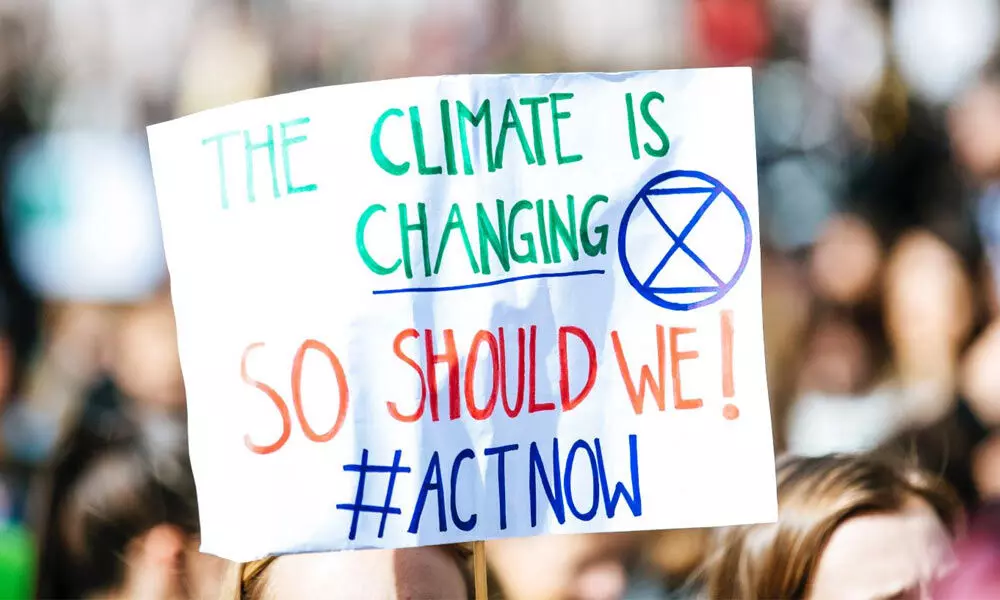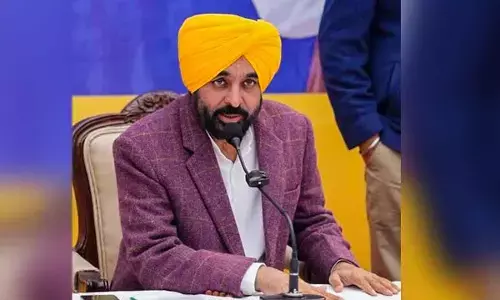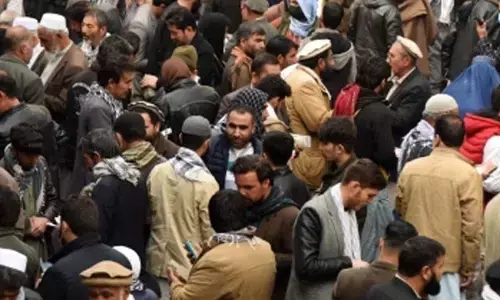It's common man's climate challenge

It’s common man’s climate challenge
This year's Nobel Prize in Physics will go to Klaus Hasselmann from Germany, Syukuro Manabe from Japan, and Giorgio Parisi from Italy for their physical models of the Earth's climate
This year's Nobel Prize in Physics will go to Klaus Hasselmann from Germany, Syukuro Manabe from Japan, and Giorgio Parisi from Italy for their physical models of the Earth's climate. This was announced by the Royal Swedish Academy of Sciences in Stockholm on October 5. Giorgio Parisi will be honoured for his revolutionary contribution to the theory of disordered substances and random processes.
Syukuro Manabe and Klaus Hasselmann laid the foundation for our knowledge of Earth's climate and how humanity affects it. It is precisely this knowledge which is helping us today to understand how we as humans can in the long run try to reverse this process. With the help of computational models, the physicist, Klaus Hasselmann, recognised the man-made rise in temperature decades ago and called on politicians to take action. Let us be very frank, even under the assumption that from tomorrow all governments and societies all over the world unite to implement measures for an immediate and extreme reduction of global greenhouse gas emissions, the world will continue to face a serious climate challenge due to past emissions. What does this mean?
There are two main policy responses to climate change: mitigation and adaptation. Mitigation addresses the root causes, by reducing greenhouse gas emissions, while adaptation seeks to lower the risks posed by the consequences of climatic changes. India is among the top 10 most affected countries in the Global Climate Risk Index 2021. As we all know, India is already experiencing the consequences of 1°C of global warming, which are reflected in extreme heat waves, heavy rainfall, severe flooding, catastrophic storms and rising sea levels damaging lives, livelihoods and assets across the country. These serious economic implications are expected to become more adverse. India may lose anywhere around 3 to 10 per cent of its GDP annually by 2100 and its poverty rate may rise by 3.5 per cent in 2040 due to climate change, according to a report titled, 'The Costs of Climate Change in India,' by the London-based global think-tank Overseas Development Institute in June 2021.
Indeed, driven by consumption and lifestyle changes, per capita greenhouse gas emissions are constantly increasing in India. The use of traditional biomass for fuel (e.g., firewood) is high in peri-urban areas; at the same time, modernisation and urbanisation processes have led to a growth of commercial energy and indirect energy uses, e.g. of energy embodied in products and services, indicating a shift towards a modern consumer society.
Given these risks of climate change, driven mainly by the consumption of fossil fuels, a fundamental shift in energy consumption patterns is required, leading to a low-emission society: implying massive changes in many domains, e.g. energy 'production,' mobility, food production, domestic energy consumption. Technical measures and policy instruments are certainly indispensable for arriving at reasonable solutions. However, such adjustments in norms, rules and patterns of interaction and organisation cannot and must not be limited to the political and administrative realms, but must simultaneously take place in civil society, families and households.
However, experience shows that energy use and greenhouse gas emissions from production and provision of goods and services, private and public, will not change sufficiently without transformation of lifestyles and consumption patterns. What we need in order to meet the challenge is society-wide transition towards sustainability, including the change of policies, technology, lifestyles. If mitigation and adaptation strategies are not part of a new and attractive vision of a good life, they will most probably fail, lacking both lived everyday reality, and political support from the electorate.
At the same time, the contradiction between considerable economic growth, resulting in a developing consumer society, with modern technologies and services on the one hand and poverty, malnutrition, health problems, social exclusion and resource degradation on the other is very striking in our society. That means the perceptions towards environment and climate change issues and necessary action and measures will invariably be different. Though environment is scale neutral, the measures and actions cannot be, as different strata of people and social groups are involved.
A carbon footprint approach could be one source to look at the issue in a differentiated way. Carbon footprint is the total greenhouse gas emissions (including carbon dioxide and methane) caused by an individual, community, event, organization, service, or product, expressed as a carbon dioxide equivalent. Globally, the top 20 emitters of CO2 are responsible for 78% of global emissions. The following countries are the ten largest emitters of carbon dioxide: China (9.3 GT), United States (4.8 GT), India (2.2 GT), Russia (1.5 GT), Japan (1.1 GT), Germany (0.7 GT), South Korea (0.6 GT), Iran (0.6 GT), Canada (0.5 GT). However, if we look at per capita emissions, India ranks far below world average. It emits 7.1% of global emissions and has per capita emissions of about 2.47 Tco2e (tonnes of carbon dioxide equivalent), as compared to the global average of 6.45 tco2/per capita. Here too there is very high disparity between developed nations and developing nation like India. This also implies the greater challenge and contribution developed world faces towards combating climate change.
A recent study by the Research Institute for Humanity and Nature has found that the top 20% of high expenditure households in India generate nearly seven times the carbon emissions compared to low-expenditure households, defined as those who spend less than $1.9 in a day. The average carbon footprint of every person in India was estimated at 0.56 tonne per year – with 0.19 tonne per capita among the poor and 1.32 tonne among the rich. According to IndiaSpend, the study combined household expenditure data from the 2013 National Sample Survey Organisation (NSSO) and observed that food and electricity were two avenues of expenditure that accounted for the majority of emissions in the country across socio-economic groups. It is predominantly the affluent households who have to contribute substantially more towards combating climate change effects through changing their lifestyles here and elsewhere in the world. It's indeed a common man's climate challenge!
(Writer is a Humboldt Expert in Agriculture, Environment and Climate Change)














